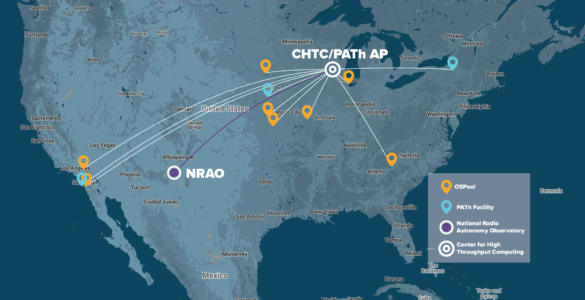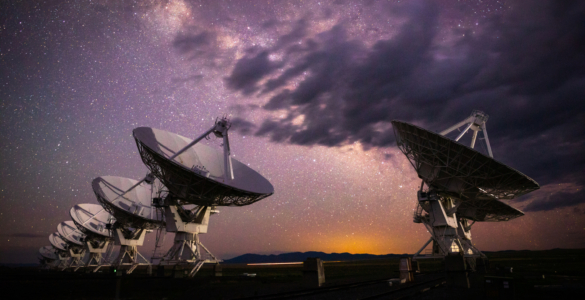Latest NRAO News
News is managed by NRAO News & Public Information. Questions about News? Have a story to share? Want to interview a scientist or create new media about our telescopes?

Looking for a more efficient way to process a particularly large VLA data set, to produce one of the deepest radio images of the Hubble Ultra Deep Field (HUDF), made famous by the Hubble Telescope, NRAO staff decided to try a different approach.

What happens to planet-sized objects that don’t have a star? A team of astronomers studying Jupiter-mass binary objects (JuMBOs) in the Orion Nebula are gaining a new understanding of these unusual systems.

A new study may help settle the question of how rapidly the Milky Way’s supermassive black hole is spinning.

In a groundbreaking cosmic quest, the SETI Institute’s Commensal Open-Source Multimode Interferometer Cluster (COSMIC) at the Karl G. Jansky Very Large Array (VLA) is expanding the search for extraterrestrial intelligence (SETI). This cutting-edge technology is not a distinct telescope; it’s a detector. COSMIC searches for extraterrestrial signals and paves the way for future science using a copy of the raw data from the telescope’s observations.

New scientific results from the Atacama Large Millimeter/submillimeter Array (ALMA), the Very Large Array (VLA), and Green Bank Observatory…

Zach Gallegos is a shining example of dedication and hard work. His journey from a security guard to the HVAC and Plumbing lead at the VLA is inspiring. Despite the challenges, he continues to serve with grit and determination, ensuring the smooth operation of the VLA. His story serves as a reminder that with passion and dedication, one can achieve great heights in any field.

A study of rare megastorms on Saturn using data from the National Science Foundation’s Karl G. Jansky Very Large Array has revealed disruptions in the distribution of ammonia gas in the planet’s deep atmosphere. The findings raise questions about just how different gas giants can be from each other, and challenge scientists’ understanding of how megastorms may form on planets other than Earth.

While studying classical novae using the National Radio Astronomy Observatory’s Very Long Baseline Array (VLBA), a graduate researcher uncovered evidence the objects may have been erroneously typecast as simple. The new observations detected non-thermal emission from a classical nova with a dwarf companion.

New scientific results from the Very Long Baseline Array (VLBA), the Very Large Array (VLA), and the Green Bank Observatory (GBO) will be revealed at multiple press conferences during the 242nd meeting of the American Astronomical Society (AAS) from June 5-7, in Albuquerque, New Mexico.

A new exhibition series celebrating New Mexico’s dark skies will include rare nighttime photography of the National Science Foundation’s Karl G. Jansky Very Large Array (VLA) by renowned dark skies photographer Bettymaya Foott. Dark Sky Land Exhibition Series No. 1 / DARK – The Astronomers, which features images from 20 photographers and artifacts from the Astronomical Lyceum Collection, opens on May 6th at Warehouse 1-10 in Magdalena.





